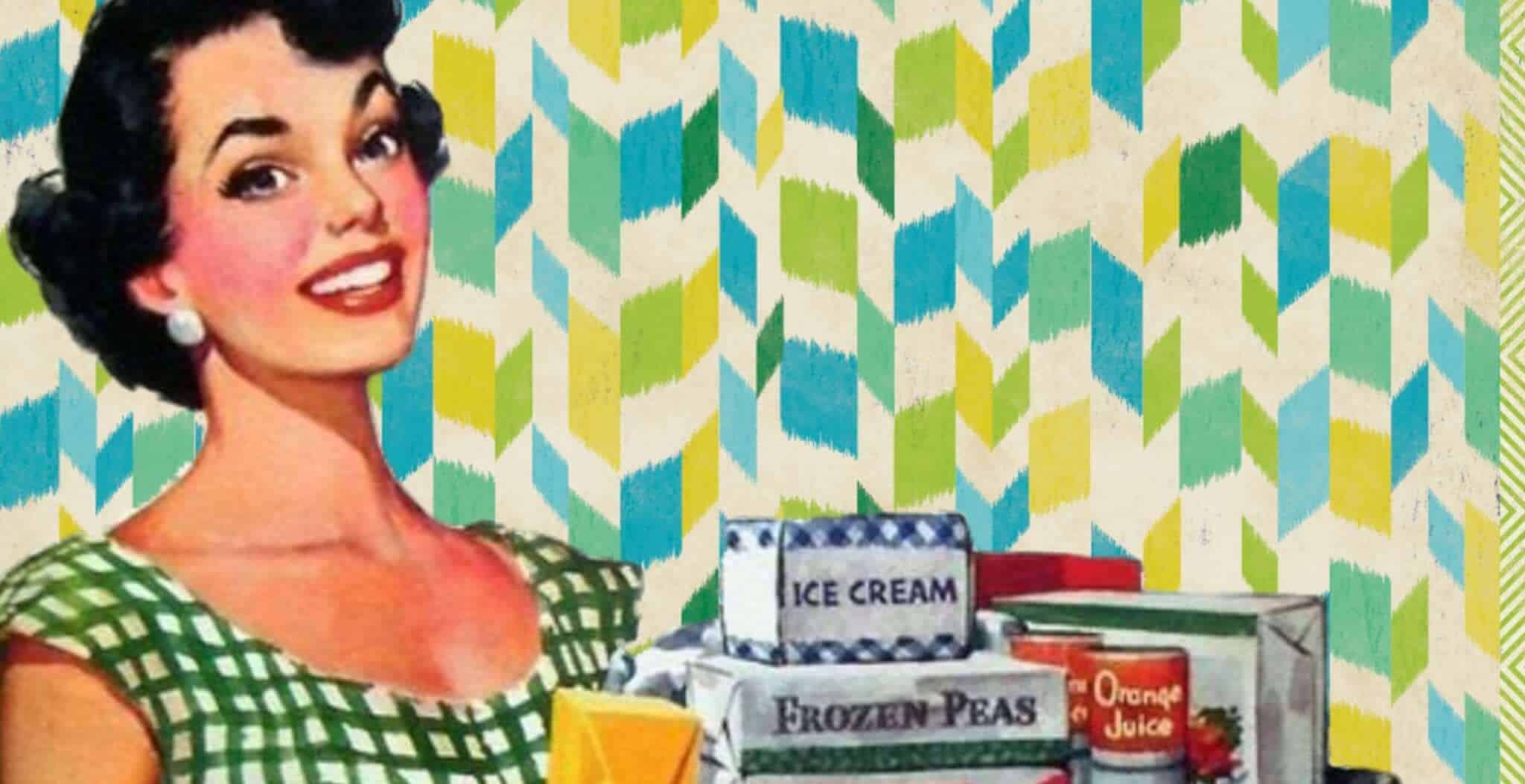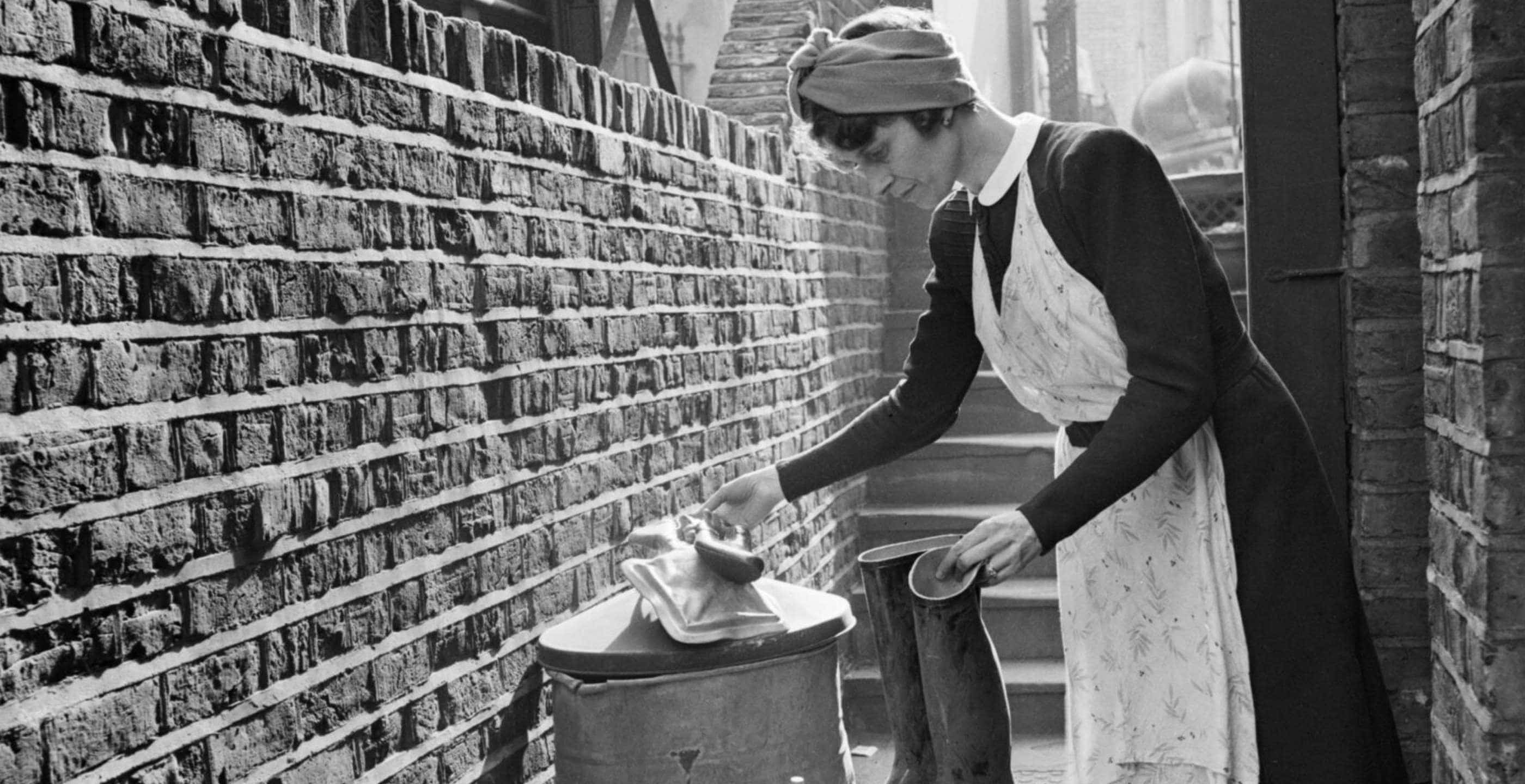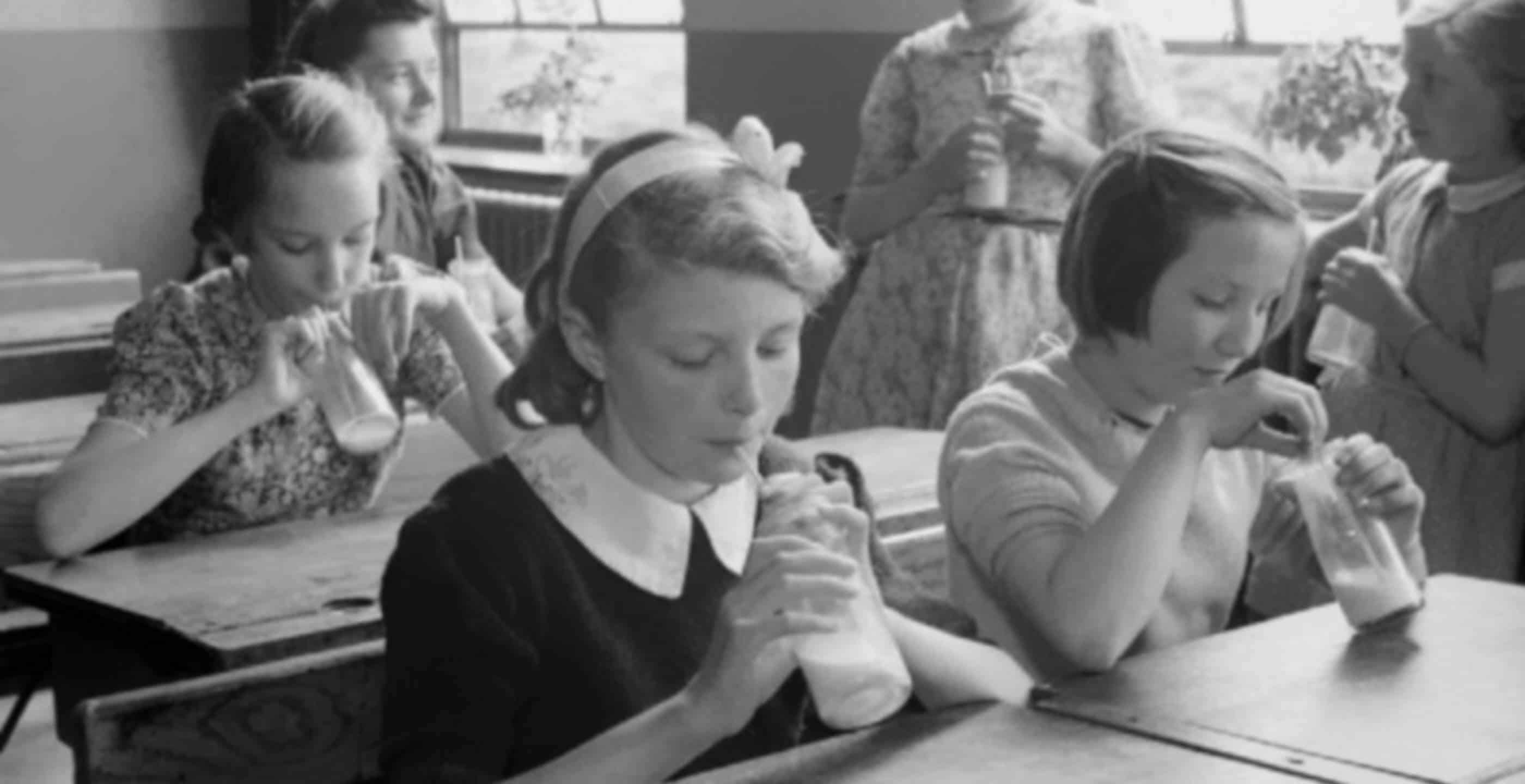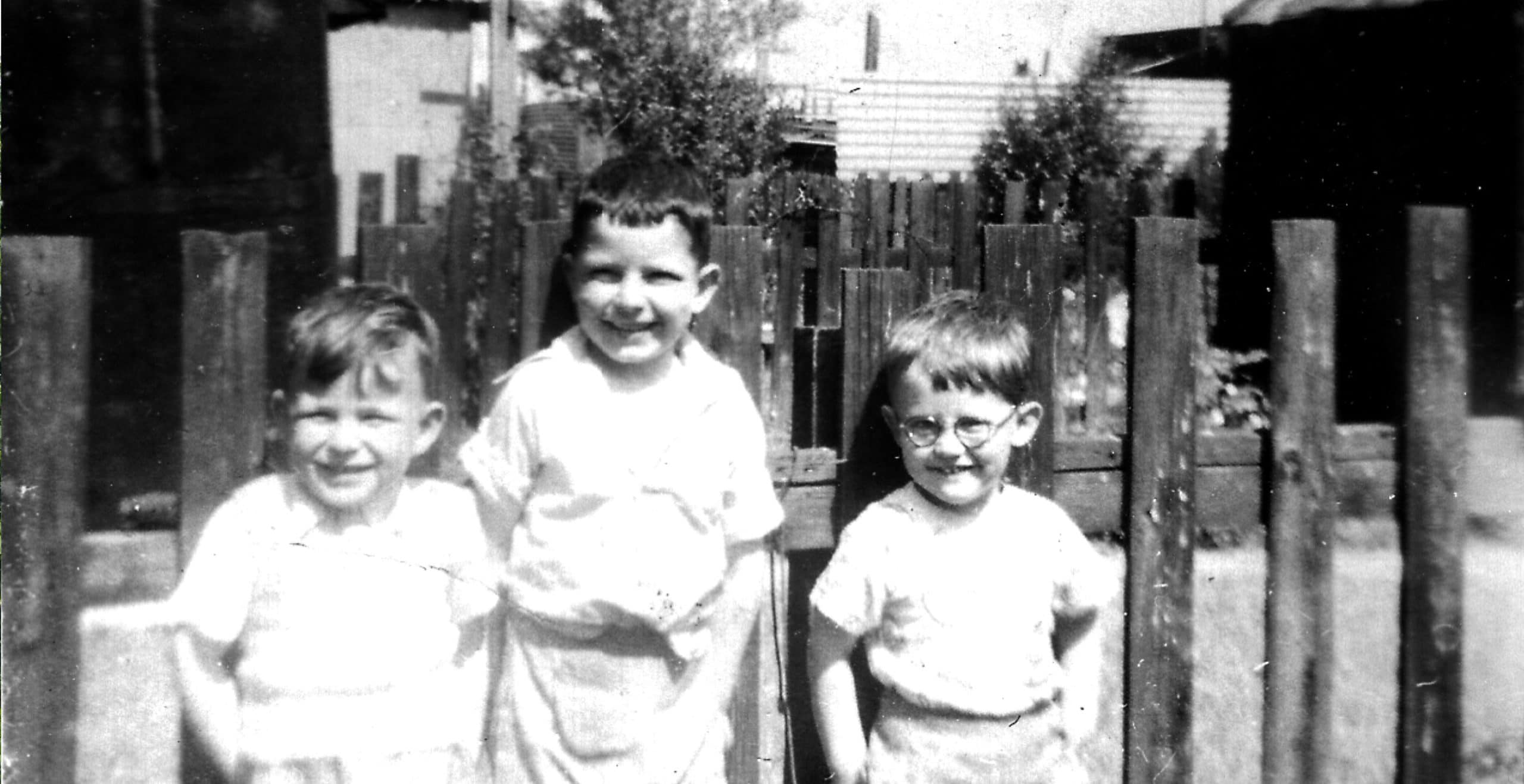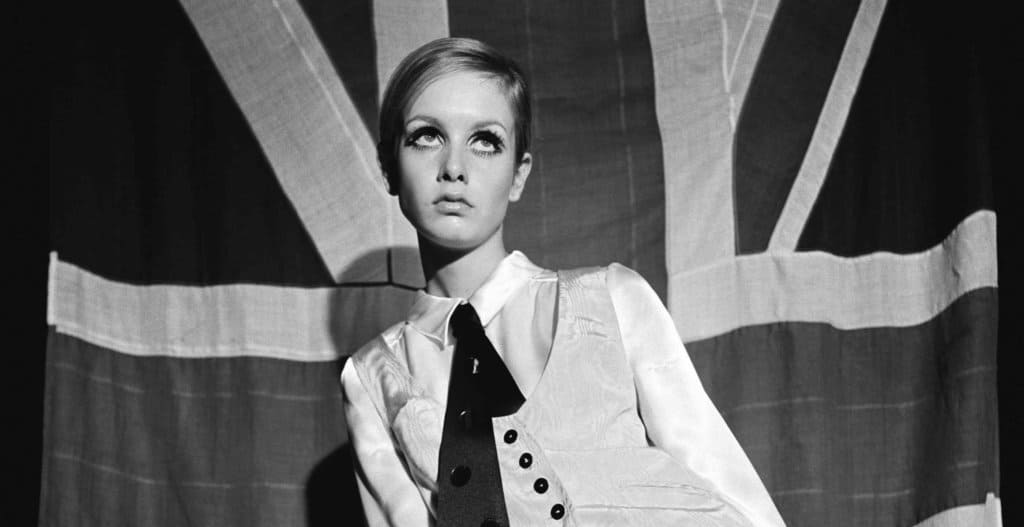For a woman, were the 1950s and 1960s the best of times or the worst of times?
The life of the average married woman in the 1950s and 60s was very different from that of today’s woman. This was the age of respectability and conformity. Very few women worked after getting married; they stayed at home to raise the children and keep house. The man was considered the head of the household in all things; mortgages, legal documents, bank accounts. Only the family allowance was paid directly to the mother. Should a woman find herself in a loveless or violent marriage, she was trapped; she had no money of her own and no career.
It was still unusual for women to go to university, especially working class women. Most left school and went straight into work until they married. Secondary schools – even grammar schools – prepared girls for this life: lessons were given in cookery, household management, darning, sewing and even how to iron an shirt properly. Girls were trained to look after their husband, their children and the house.
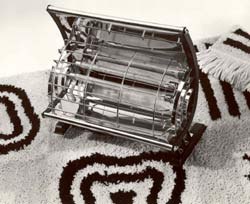
1950s electric fire, courtesy The Memory Store
The house itself was very different from that of today. There was no central heating; the downstairs rooms were heated by coal fires and then later, after the Clean Air Acts of 1956 and 1968, by coke or gas fires. Upstairs the heating was provided by calor gas or paraffin stoves and electric fires. During the winter it was common for ice to form on the INSIDE of the windows! Night-time routine was hot water bottles in the beds and undressing downstairs in the warm. Thick dressing gowns and slippers were essentials. Every home had a coal hole or bunker. The coal men would carry the bags of coal to the coal bunker, from where the coal was taken by coal scuttle into the house.
In the kitchen, fridges were becoming more common although freezers were unheard of. It wasn’t until the early 1960s that local shops – there were no supermarkets – started stocking basic frozen foods such as frozen peas and fish fingers. These were purchased and cooked straight away as most people could not store them. Many people had only the pantry with its cold shelf, where butter, milk, cheese etc. was stored. The first taste of ice cold milk from a fridge was like nectar for a child used to milk from the cold shelf!
Shopping for food in the 1950s and 1960s was done every day as storing fresh food was difficult. There were no supermarkets so the housewife would visit the local baker, the butcher, the greengrocer and the grocer individually, carrying all her shopping home in baskets or in a pull-along trolley. She would pride herself on budgeting and keeping within the weekly allowance that she would receive from her husband. Not many working or middle class families had a family car although many had motorbikes. Traffic was light especially down residential streets so children played out in the street quite safely.
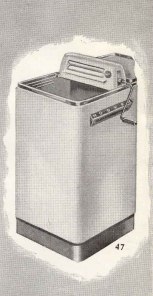 Monday was washing day in most households. No just popping the clothes into the machine and then into the tumble drier for the 1950s woman. If you were lucky enough to have a washing machine, it would be a twin-tub with mangle on top. This had to be filled from the tap. One side had a washing machine, the other a spin dryer. After the clothes had washed they were lifted out of the hot water with large wooden tongs, fed through the mangle and then dropped into the spin dryer. The whole kitchen would fill with steam as first the whites were washed and then the coloured clothes as the water cooled. There were no tumble driers so in the winter or when it rained, clothes were hung on clothes horses or airers around the fire or in the kitchen where it was warm. On other days clothes were pegged out to dry on clothes lines with wooden pegs (image right courtesy of The Memory Store).
Monday was washing day in most households. No just popping the clothes into the machine and then into the tumble drier for the 1950s woman. If you were lucky enough to have a washing machine, it would be a twin-tub with mangle on top. This had to be filled from the tap. One side had a washing machine, the other a spin dryer. After the clothes had washed they were lifted out of the hot water with large wooden tongs, fed through the mangle and then dropped into the spin dryer. The whole kitchen would fill with steam as first the whites were washed and then the coloured clothes as the water cooled. There were no tumble driers so in the winter or when it rained, clothes were hung on clothes horses or airers around the fire or in the kitchen where it was warm. On other days clothes were pegged out to dry on clothes lines with wooden pegs (image right courtesy of The Memory Store).
Sunday night was bath night. The water was heated by a back boiler behind the coal fire or in the summer, by an expensive electric immersion heater. Hot water tanks could not store that much water, so shallow baths were the order of the day, as all the family would bathe one after the other.
Most households had a vacuum cleaner and a cooker. Entertainment was provided by the radio (wireless) or gramophone, and more and more people were acquiring televisions. These, like telephones, were rented, not owned. All televisions showed programmes in black and white; there were only two TV channels to watch, the BBC and the commercial channel.
Clothes were often homemade, either sewn or knitted. Knitted items when outgrown were re-cycled by being unravelled and re-knitted into something else. When collars on shirts became frayed, they were unpicked, turned inside out and sewed back on. All buttons and zips from old clothes were saved for the button box. Socks and stockings were darned.
Dinner would be on the table ready and waiting for the man of the house on his return from work. Housework and the care of children was considered woman’s work so the man would expect the house to be clean and tidy, meal ready, children fed and washed and his clothes all ready for the next day at work.
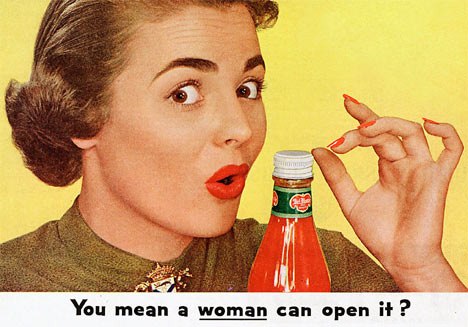
1950s Del Monte ketchup advertisement
There was a succession of callers to the 1950s house. These would include the rag and bone man, a man with a horse and cart and a call of ‘any old rags’. The rag and bone man would buy your old clothes for a few pennies and mend your pots and pans when the bottoms went through. There was also the ‘pop man’ from whom you would buy lemonade, dandelion and burdock, and soda; each week you would return your empty bottles to him when you bought your next weeks’ drinks. Alcoholic drinks could be bought from the off-licence, often part of the local pub; again you would return the bottles in exchange for a few pence. The milk man came daily and delivered your milk right on to your doorstep – again he would take away the empty bottles to be washed and re-used. The local shops would also deliver your groceries, bread and meat, the delivery boys using bicycles to make their rounds. The dustbin men worked extremely hard, carrying the old metal dustbins on their backs from the householder’s back door to the cart and then returning them back.
For the 1950s housewife there was no need to go the gym; her day-to-day jobs kept her physically active. She walked to the shops and took the children to school every day on foot; the housework she did was very labour-intensive without today’s gadgets and there were no such things as convenience foods or fast food outlets. Sweets and crisps (the only flavour available was ready salted) were treats rather than everyday foods.
The 1950s housewife had been prepared both at school and at home for her role in life; she took pleasure and pride in looking after her home and family to the best of her ability. However on the other side of the coin, she didn’t have a career outside the home and she had no income of her own, which left her dependent on her husband.
Best of times or worst of times? Bit of both it appears.
Published: 24th June 2015
